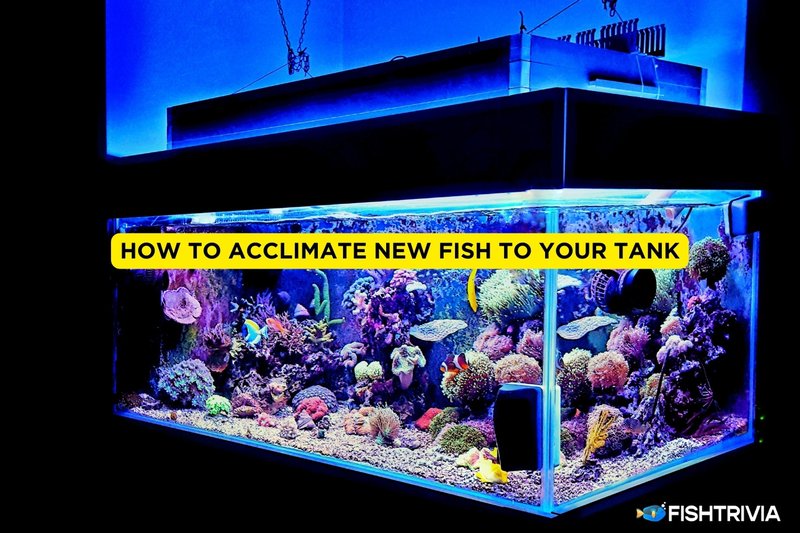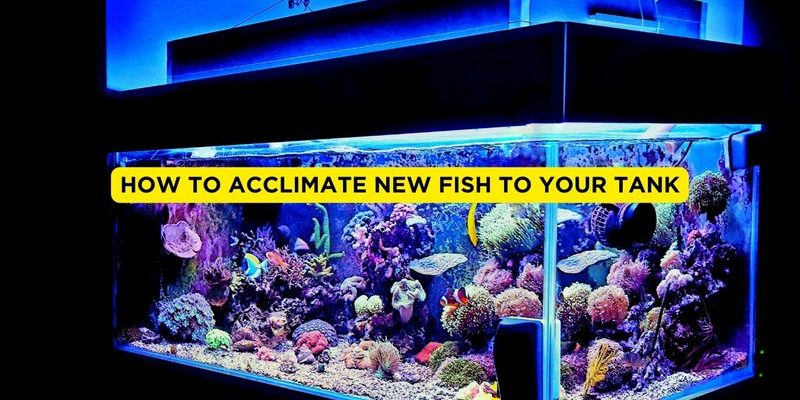
Acclimating a marine angelfish is an essential step that can make or break your fish’s experience in your home tank. These beautiful creatures, like the popular *Marine Angelfish*, thrive best when they’re introduced thoughtfully. By following a few careful steps, you can help your new friend transition perfectly, making the most of both your aquarium and their vibrant personality.
Why Acclimation is Important
You might be wondering, why is acclimation so crucial? Think of it like this: your marine angelfish has been living in a completely different environment, perhaps a store or a different tank. It’s used to specific water conditions such as temperature, salinity, and pH levels. Suddenly changing all these factors can be overwhelming for them. Just like you’d feel out of place in a new city without any guidance, your fish needs time to adjust.
Acclimating your angelfish helps prevent shock, which can lead to stress and illness. This is especially important for angelfish, as they’re known for being sensitive to changes in their surroundings. Taking the time to acclimate can mean the difference between a thriving fish and one that struggles to adapt.
Gathering Your Supplies
Before you start the acclimation process, you’ll need a few supplies. Think of this as setting the stage for your new arrival. Here’s what you’ll need:
- A bucket or container (preferably not made of metal)
- A heater (if necessary, to match tank conditions)
- A thermometer
- A water test kit
- A net for transferring the fish
When you gather your supplies, check to ensure that everything is clean and free from contaminants. This can help prevent any unwanted issues when you introduce the fish to your aquarium.
Understanding the Different Acclimation Methods
There are a few methods to acclimate your marine angelfish, and each has its pros and cons. Common methods include the “float method” and the “drip acclimation” technique.
1. Float Method
This is a pretty simple approach. You place the sealed bag with the fish in your tank for about 15-20 minutes. This allows the water temperature to equalize. After that, you can slowly add small amounts of your tank water into the bag. Repeat this for about an hour before transferring the fish to the tank.
2. Drip Acclimation
This method is more gradual and is often recommended for sensitive fish like angelfish. You’ll want to set up a drip line using airline tubing, allowing tank water to drip slowly into the container with your fish. This process can take several hours, but it ensures that your fish acclimates slowly to the changes in water chemistry.
You might find that one method works better for you than the other, so don’t hesitate to experiment and see what leads to the happiest fish!
Step-by-Step Acclimation Process
Let’s break down the acclimation process into clear steps. Here’s how to do it effectively:
1. Float the Bag: After you bring the angelfish home, float the sealed bag in your aquarium for about 15-20 minutes to help the temperature match.
2. Add Tank Water: Open the bag and begin adding small amounts of tank water. Do this gradually, over the course of an hour. You want to mix the water so your fish can get used to the new environment.
3. Transfer the Fish: After an hour, use a net to gently transfer the angelfish into the tank. Avoid adding any water from the bag into your aquarium, as it may contain substances that could disrupt the balance.
4. Monitor: Keep an eye on your fish for the next few hours. Look for signs of stress, like hiding or erratic swimming. If you notice anything unusual, be prepared to change your approach.
This step-by-step process ensures that your fish acclimates comfortably and reduces the chances of stress or illness.
Setting Up the Ideal Aquarium Environment
Your aquarium environment matters a lot for your new marine angelfish. These fish prefer environments that mimic their natural habitat: warm, well-maintained waters with plenty of hiding spots.
1. Water Parameters: The ideal temperature for marine angelfish is around 75-80°F (24-27°C), with a pH of 8.1-8.4. It’s crucial to keep these levels stable. You can regularly test the water to ensure everything stays in the optimal range.
2. Hiding Places: Create a comfortable space with rocks, corals, or plants. Angelfish enjoy exploring and can be a bit shy at first, so having plenty of places to hide will help them feel secure.
3. Quality Filtration: Make sure your aquarium has a good filtration system. Clean water is essential for the health of your fish. Regularly change about 10-15% of the water weekly to maintain quality.
Staying committed to providing a stable and inviting environment will pay off in the long run, helping your angelfish thrive.
Common Mistakes to Avoid
While acclimating your marine angelfish, there are some common pitfalls you’ll want to dodge:
– Skipping Temperature Equalization: Rushing the process by skipping the float method can lead to shock. Always give your fish time to adjust.
– Adding Too Much Water from the Bag: Don’t introduce water from the bag into your tank. It can carry harmful chemicals or diseases.
– Neglecting Monitoring: After introducing the fish, don’t just walk away. Keep an eye on them for at least a few hours to catch any signs of stress or illness.
Honesty is key here: acclimating a fish is a big responsibility. But paying attention to these details helps ensure your marine angelfish gets the best start possible.
Acclimating a new marine angelfish is an important part of being a fish owner. It might feel daunting at first, but remember to take it step by step. By taking the time to acclimate your fish properly, you’re not just setting the stage for a healthy fish; you’re also creating a beautiful and lively atmosphere in your aquarium.
Always keep in mind the importance of water quality, the right environment, and patience. Before you know it, your marine angelfish will be swimming confidently around its new home, bringing joy and color to your aquarium. Enjoy the journey of fishkeeping—there’s nothing quite like watching your new aquatic friend thrive!

